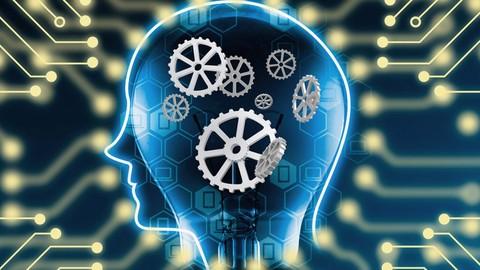Last Updated on September 27, 2023 by GeeksGod
Course : Clustering & Classification With Machine Learning In Python
Why You Should Take This Course:
This course is your complete guide to both supervised and unsupervised learning using Python. If you’re interested in practical data science, this course covers all the main aspects, saving you from taking multiple courses or buying books on Python-based data science.
In today’s age of big data, Python is widely used by companies worldwide to analyze large amounts of information. By becoming proficient in unsupervised and supervised learning in Python, you can give your company a competitive edge and advance your career.
About the Instructor:
My name is Minerva Singh, and I am an Oxford University MPhil (Geography and Environment) graduate. I also recently completed a PhD at Cambridge University. With over five years of experience, I have analyzed real-life data from various sources using data science techniques and published my findings in international peer-reviewed journals.
Throughout my research, I realized that most Python data science courses and books do not adequately cover the multidimensional nature of the topic. This course aims to address this gap, providing you with a solid grounding in machine learning, specifically clustering and classification using Python.
Unlike other Python instructors, I delve deep into the machine learning features of Python, giving you a unique understanding of Python data science. You will learn everything from data reading and cleaning to machine learning and even implementing simple deep learning models using Python.
Course Overview:
The course is divided into seven sections, each designed to help you master Python machine learning:
Section 1: Introduction to Python Data Science and Anaconda
In this section, you will receive a comprehensive introduction to Python data science and the powerful Python-driven framework for data science known as Anaconda.
Section 2: Getting Started with Jupyter Notebooks
Jupyter notebooks are a popular tool for implementing data science techniques in Python. This section will guide you through the basics of using Jupyter notebooks and how to get started with them.
Section 3: Data Structures and Reading in Pandas
In this section, you will learn about data structures and how to read in data using Pandas. This will include working with CSV, Excel, and HTML data formats.
Section 4: Pre-Processing and Wrangling Python Data
Pre-processing and wrangling data are essential steps in any data science project. In this section, you will learn how to handle missing data, conditional data, and group data by attributes, among other techniques.
Section 5: Machine Learning – Supervised and Unsupervised Learning
This section focuses on machine learning, covering both supervised and unsupervised learning in Python. You will gain a comprehensive understanding of these techniques and their applications.
Section 6: Artificial Neural Networks and Deep Learning
In this section, you will explore artificial neural networks (ANN) and deep learning. You will even discover how to use ANN and deep learning structures for classification tasks.
Section 7: Advanced Techniques in Python Data Science
As the final section of the course, this section takes a deep dive into advanced techniques in Python data science. You will learn about unsupervised learning, dimension reduction, supervised learning, and even get an introduction to deep learning and neural networks using the H2o framework.
With such a rigorous grounding in these topics, you will become an unbeatable data scientist by the end of the course.
No Prior Knowledge Required:
This course does not assume any prior knowledge of Python, statistics, or machine learning. It starts by covering the basics and gradually introduces more advanced concepts. The course adopts an easy-to-understand, hands-on approach to simplify even the most challenging concepts in Python.
You will learn the methods using real data obtained from various sources. After completing this course, you will be comfortable using packages like Numpy, Pandas, and Matplotlib to work with real data in Python. Concepts like unsupervised learning, dimension reduction, and supervised learning will no longer be a mystery to you. Additionally, you will be introduced to deep learning and neural networks using the powerful H2o framework.
Most importantly, you will learn to implement these techniques practically using Python. You will have access to all the data and scripts used in this course, and I will be available to support my students every step of the way.
Join the Course Now:
If you’re looking to excel in Python machine learning, this course is for you. By mastering the techniques and concepts covered in this course, you can elevate your career and gain a competitive advantage in the field of data science. Don’t miss out on this opportunity – enroll in the course now!
Keywords: Free Udemy Coupon, machine learning














